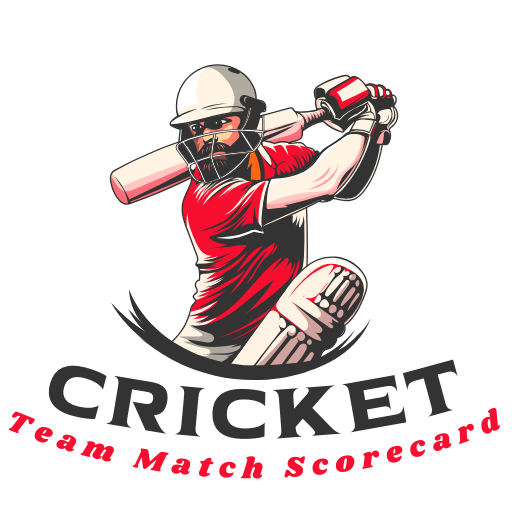The world of competitive gaming, or esports, has grown from niche tournaments into a multi-billion-dollar industry with global audiences. Alongside this boom, a new trend is capturing the attention of fans: fantasy esports. Much like fantasy football or cricket, fantasy esports allows fans to draft their favourite professional gamers, create virtual teams, and earn points based on real-life performances.
But while the concept may sound familiar to traditional fantasy sports enthusiasts, fantasy esports has its own unique rules, strategies, and quirks. To understand this phenomenon, let’s explore how it works, how fans can excel, and why it differs from long-standing favourites like football or cricket fantasy leagues.
What is Fantasy Esports?
Fantasy esports is a platform where fans draft teams of professional players from competitive games such as League of Legends (LoL), Dota 2, Counter-Strike: Global Offensive (CS: GO), Valorant, and more. Just like in fantasy football or cricket, points are awarded based on the players’ actual in-game performance during tournaments or league matches.
For example, if you select a League of Legends jungler who dominates a match with multiple kills and assists, your fantasy team earns points. If that player underperforms, your score drops. The aim is to build the most effective fantasy roster and compete against other fans for bragging rights or prizes.
It’s comparable to tracking a sports league’s ipl ranking, where teams rise or fall depending on performance—the thrill lies in seeing your picks succeed or fail in real-time.
Rules of Fantasy Esports
While rules may vary depending on the platform, most fantasy esports leagues follow these general structures:
- Drafting Players
- Participants are drafted from a pool of available professional players.
- Popular platforms offer salary caps, meaning each player is assigned a value, and you must balance your budget wisely.
- Scoring System
- Players score points based on in-game statistics.
- Typical metrics include kills, assists, damage dealt, healing, or objectives secured.
- Some leagues include bonuses for MVP awards or winning streaks.
- Team Composition
- Just like fantasy football, you must fill specific roles. In LoL, for example, you need a top laner, jungler, mid laner, AD carry, and support.
- Flex slots sometimes allow you to add any extra role for variety.
- Weekly Lineups
- Fans can adjust lineups based on fixtures. Facing weaker opponents often means better points for your chosen players.
- Leaderboards & Leagues
- Participants compete in leagues with friends or strangers.
- Leaderboards track cumulative scores, and top performers often win cash prizes or in-game rewards.
Strategies for Winning in Fantasy Esports
Success in fantasy esports requires more than picking your favourite pro player. Strategic thinking, research, and adaptability are crucial.
1. Know the Meta
Every esports has a shifting “meta” (most effective tactics available). Players and teams who adapt quickly to patch changes usually dominate. For instance, if a patch buffs aggressive playstyles, certain players may shine while others struggle.
2. Study Matchups
A strong player facing a weak opponent is more likely to generate high points. Analysing tournament brackets and upcoming matchups gives you an edge when setting lineups.
3. Balance Risk and Reward
High-profile stars often come with high “salaries” in fantasy drafts. Investing in a mix of star players and undervalued talents ensures depth without blowing your budget.
4. Watch for Hot Streaks
Momentum matters in esports. Players on winning streaks tend to maintain strong form, while slumping teams often drag down their fantasy scores.
5. Specialise by Game
Fantasy strategies vary by esports. In CS:GO, fraggers (high kill players) often dominate point charts, while in League of Legends, supports can quietly rack up assists and objective control points. Tailoring strategy to the game is essential.
Key Differences from Traditional Fantasy Sports
While fantasy esports borrows heavily from traditional fantasy formats, there are crucial differences that make it unique.
1. Frequency of Matches
Unlike football or cricket, where games may happen weekly, esports tournaments can feature multiple matches per week or even per day. This rapid pace creates constant lineup changes and dynamic scoring opportunities.
2. Role Specialisation
Traditional sports fantasy often focuses on broad positions (forward, defender, bowler). Esports demands more nuanced role knowledge, such as understanding the difference between a mid laner and a jungler in LoL.
3. Impact of Patches
Football or cricket rules rarely change, but esports games frequently undergo balance patches. A single patch can completely alter which strategies, heroes, or weapons are dominant, which directly impacts fantasy outcomes.
4. Global Nature
While fantasy football or cricket may focus on specific leagues, esports is global. Fans may draft players competing in North America, Europe, Asia, or beyond—sometimes in the same fantasy contest.
5. Accessibility & Streaming Culture
Esports thrives in online streaming. Fans can watch every match live on Twitch or YouTube, making data and player stats more accessible than in many traditional sports. Fantasy engagement often blends seamlessly with digital communities.
Why Fantasy Esports is Growing
Several factors are driving the rise of fantasy esports:
- Younger Audiences: Digital-native fans prefer interactive experiences over passive watching.
- Streaming Integration: Platforms like Twitch integrate fantasy overlays, making participation simple.
- Monetisation Opportunities: Betting companies and fantasy platforms see esports as a new market.
- Diverse Games: Unlike fantasy football, which relies on a single sport, fantasy esports spans multiple game genres (MOBA, FPS, battle royale).
The result? Fantasy esports has become both a community activity and a serious market for competition and prizes.
Challenges Facing Fantasy Esports
Despite its growth, challenges remain:
- Regulation: Legal questions about gambling and betting laws still surround fantasy esports in some countries.
- Game Stability: Frequent patches can frustrate fans who drafted players suited to old metas.
- Match Integrity: Esports has faced concerns about match-fixing and cheating, which directly impact fantasy credibility.
- Mainstream Recognition: While growing fast, fantasy esports still has a smaller audience compared to traditional fantasy leagues.
The Future of Fantasy Esports
Looking ahead, fantasy esports will likely evolve in exciting ways:
- AI-Driven Insights: Platforms may use AI to suggest optimal lineups or predict outcomes.
- Expanded Integration: Deeper connections between streaming platforms, games, and fantasy platforms.
- Mobile Dominance: With mobile gaming and mobile esports on the rise, fantasy apps will expand to capture this segment.
- Cross-Game Fantasy: Fans may one day draft fantasy rosters across multiple games in the same contest.
Ultimately, as esports continues to go mainstream, fantasy esports is set to follow the same trajectory as fantasy football or cricket did decades ago.
Conclusion
Fantasy esports represents a thrilling blend of gaming, competition, and strategy. By understanding the rules, applying smart strategies, and recognising how it differs from traditional fantasy sports, fans can deepen their engagement with the games they love.
Much like drafting the perfect fantasy cricket team or following the shifting leaderboard in football, fantasy esports creates a personal stake in every match. As infrastructure, streaming, and regulations mature, expect fantasy esports to cement itself as one of the most exciting frontiers in digital sports culture.



